The powerful space telescope observed the barred spiral galaxy NGC 5068, creating a stunning image that reveals active star formation.
The James Webb Space Telescope imaged bright tendrils of gas and stars belonging to the barred spiral galaxy NGC 5068, whose bright central bar is visible in the upper left of this image.
The portrait of NGC 5068 shows tendrils of gas and stars stretching throughout the barred spiral galaxy. The bright and dense central bar of the galaxy, which sets it apart from"non-barred" spiral galaxies, can be seen in the upper left-hand corner of the image. These large central bars are not solid objects but are instead made of tightly clustered stars, and the stellar bars possessed by galaxies like NGC 5068 may indicate they are older and more evolved than unbarred spiralAs this bar of stars swirls, astronomers think it may pull gas and dust to the center of these galaxies, where it acts as the fuel for intense bursts of star formation. The action of the bar in NGC 5068 seems to be causing stars to form in a spiral-like shape.
, was created using two of the JWST's primary instruments Mid-InfraRed Instrument and the Near-Infrared Spectrograph both attuned to different wavelengths of infrared light.
Brasil Últimas Notícias, Brasil Manchetes
Similar News:Você também pode ler notícias semelhantes a esta que coletamos de outras fontes de notícias.
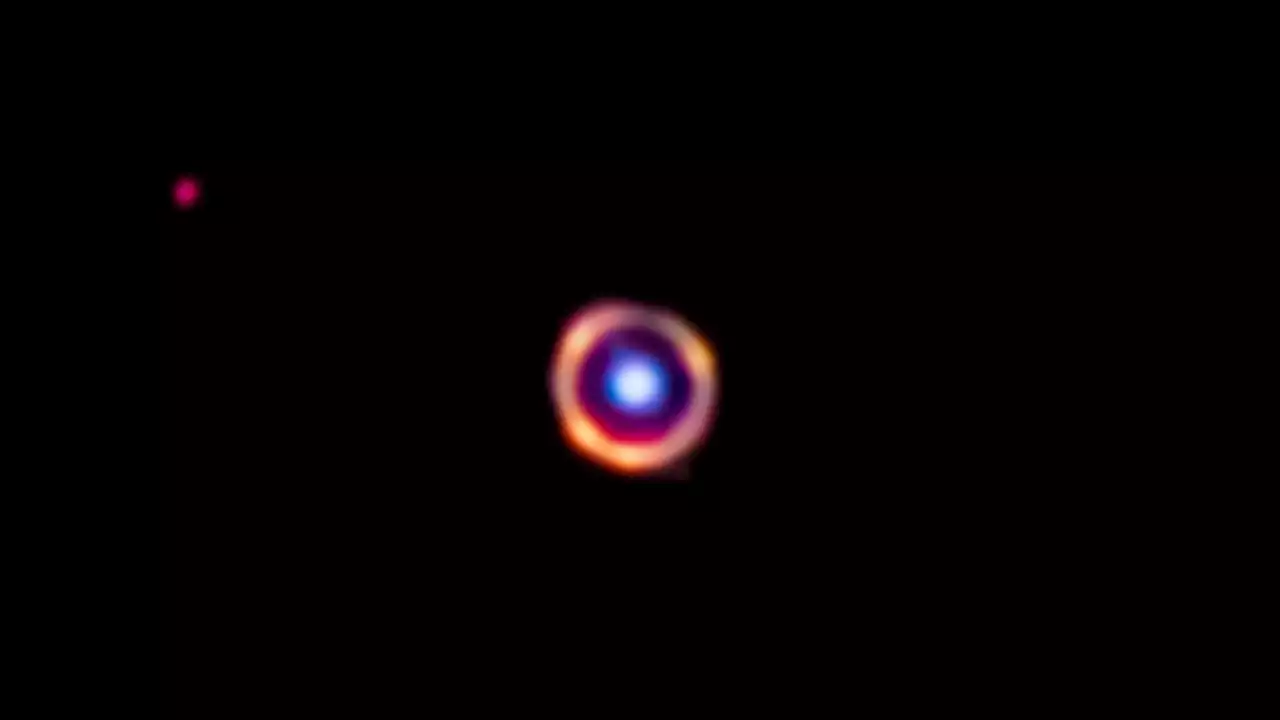 James Webb Space Telescope spies earliest complex organic molecules in the universeThe chemicals reside within a galaxy that formed when the universe was about 10% of its current age.
James Webb Space Telescope spies earliest complex organic molecules in the universeThe chemicals reside within a galaxy that formed when the universe was about 10% of its current age.
Consulte Mais informação »
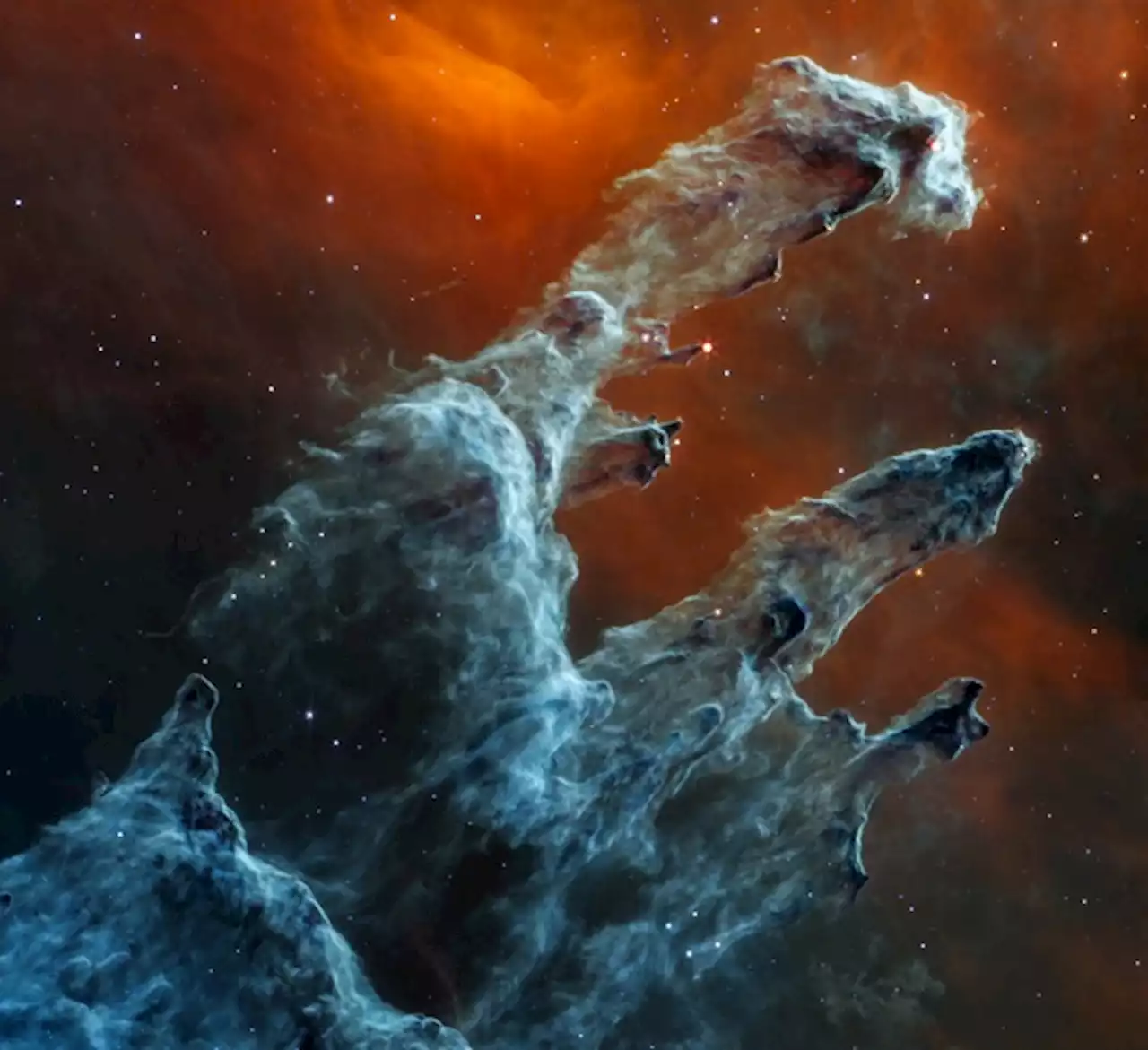 James Webb Telescope Captures Eerie Image Of Pillars Of CreationTaken by JWST’s MIRI instrument, the haunting shot highlights the copious dust visible in the Pillars when viewed in mid-infrared light.
James Webb Telescope Captures Eerie Image Of Pillars Of CreationTaken by JWST’s MIRI instrument, the haunting shot highlights the copious dust visible in the Pillars when viewed in mid-infrared light.
Consulte Mais informação »
 Cosmic Smoke Signals: James Webb Telescope Discovers Organic Molecules in Distant GalaxyAstronomers have found complex organic molecules in a galaxy more than 12 billion light-years away from Earth. Using NASA’s James Webb Space Telescope, an international team of astronomers detected complex organic molecules, akin to Earth's smoke, soot, and smog, in a galaxy 12 billion light-year
Cosmic Smoke Signals: James Webb Telescope Discovers Organic Molecules in Distant GalaxyAstronomers have found complex organic molecules in a galaxy more than 12 billion light-years away from Earth. Using NASA’s James Webb Space Telescope, an international team of astronomers detected complex organic molecules, akin to Earth's smoke, soot, and smog, in a galaxy 12 billion light-year
Consulte Mais informação »
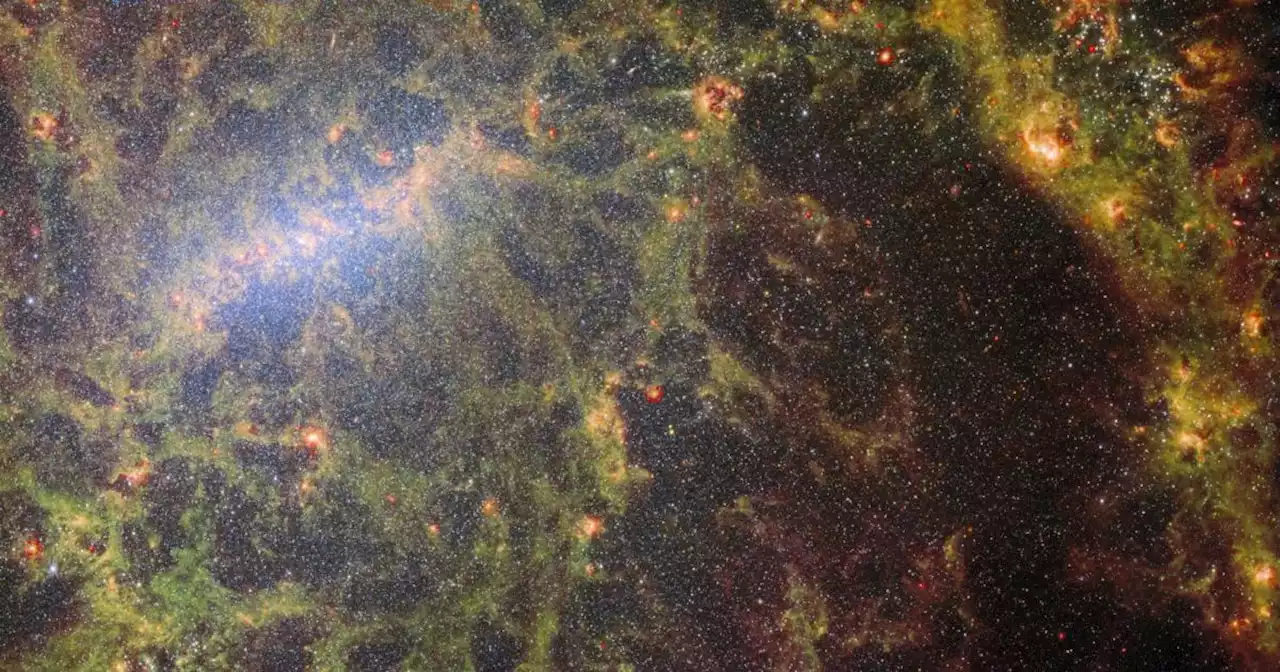 Latest Webb Telescope images gives a look at stars being born in the Virgo constellation | EngadgetThe latest images released from the James Webb Space Telescope show off the barred spiral galaxy NGC 5068.
Latest Webb Telescope images gives a look at stars being born in the Virgo constellation | EngadgetThe latest images released from the James Webb Space Telescope show off the barred spiral galaxy NGC 5068.
Consulte Mais informação »
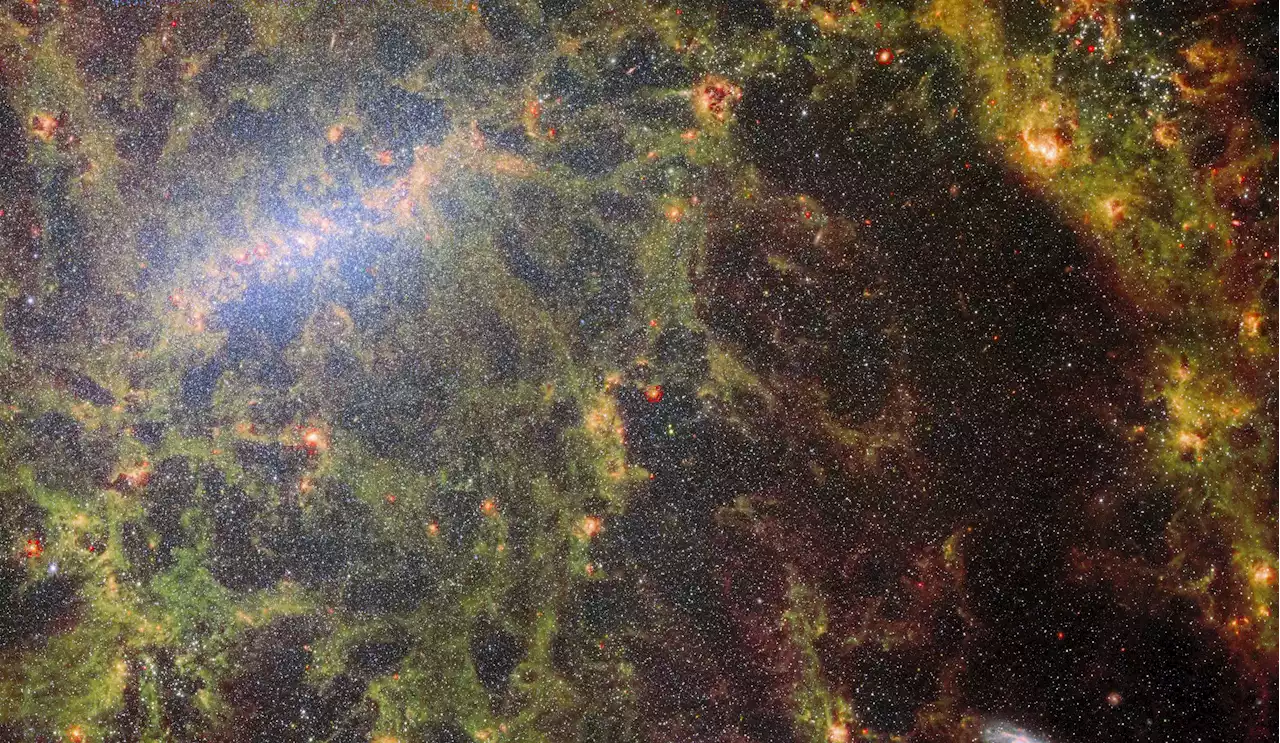 Behind Galactic Bars: Webb Telescope Unlocks Secrets of Star FormationNASA's James Webb Space Telescope has captured a detailed image of the barred spiral galaxy NGC 5068. Part of a project to record star formation in nearby galaxies, this initiative provides significant insights into various astronomical fields. The telescope's ability to see through gas and dust, ty
Behind Galactic Bars: Webb Telescope Unlocks Secrets of Star FormationNASA's James Webb Space Telescope has captured a detailed image of the barred spiral galaxy NGC 5068. Part of a project to record star formation in nearby galaxies, this initiative provides significant insights into various astronomical fields. The telescope's ability to see through gas and dust, ty
Consulte Mais informação »
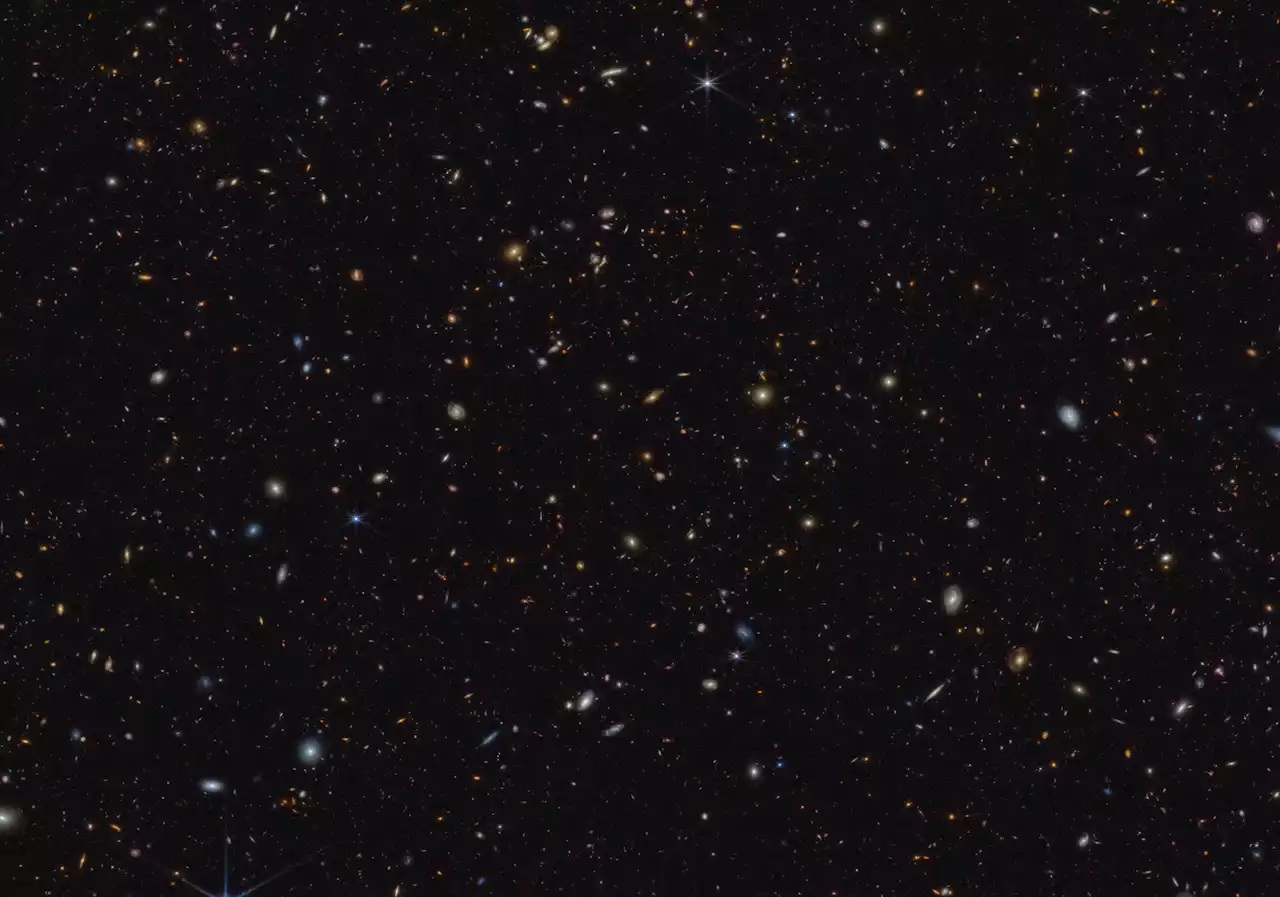 Early universe crackled with bursts of star formation, Webb Telescope showsAmong the most fundamental questions in astronomy is: How did the first stars and galaxies form? NASA's James Webb Space Telescope is already providing new insights into this question. One of the largest programs in Webb's first year of science is the JWST Advanced Deep Extragalactic Survey, or JADES, which will devote about 32 days of telescope time to uncover and characterize faint, distant galaxies. While the data is still coming in, JADES already has discovered hundreds of galaxies that existed when the universe was less than 600 million years old. The team also has identified galaxies sparkling with a multitude of young, hot stars.
Early universe crackled with bursts of star formation, Webb Telescope showsAmong the most fundamental questions in astronomy is: How did the first stars and galaxies form? NASA's James Webb Space Telescope is already providing new insights into this question. One of the largest programs in Webb's first year of science is the JWST Advanced Deep Extragalactic Survey, or JADES, which will devote about 32 days of telescope time to uncover and characterize faint, distant galaxies. While the data is still coming in, JADES already has discovered hundreds of galaxies that existed when the universe was less than 600 million years old. The team also has identified galaxies sparkling with a multitude of young, hot stars.
Consulte Mais informação »
